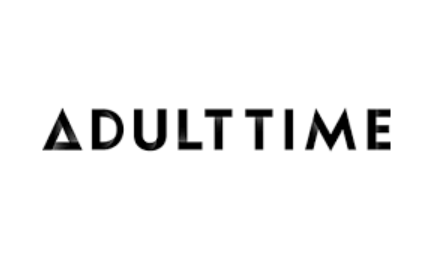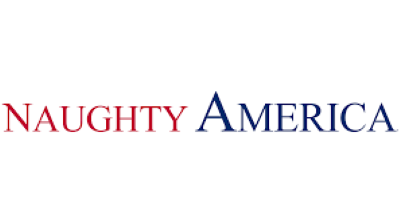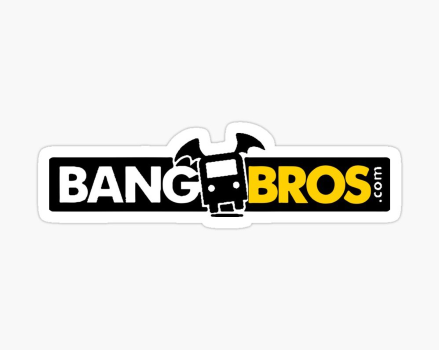Breaking Stereotypes: A Candid Look at Bisexual Representation in Media – Why Not Bi Review
6th January 2025On the surface, media representation of bisexuality may seem to have made significant strides in recent years, with more and more shows and movies featuring characters who identify as bisexual. However, a closer look reveals that these representations often fall into harmful stereotypes or tokenism, perpetuating damaging myths about bisexuality. In this candid review, we explore why the current state of bi representation in media is still lacking and discuss the importance of breaking away from tired tropes to truly showcase the diverse experiences and identities within the bisexual community.

Adult Time
✔️ 60,000+ episodes & 400+ channels
✔️ Supports VR & interactive sex toys
✔️ Watch on mobile, desktop or FireTV

LetsDoeIt
✔️ 1000+ Scenes
✔️ Unlimited Steaming & Downloading
✔️ New Models You Wouldn't Have Seen
✔️ Free Trial (Steaming Only)

Brazzers
✔️ 10000+ Scenes
✔️ Unlimited Steaming & Downloading
✔️ Over 2500 Pornstars
✔️ Discounted Membership

Naughty America
✔️ Over 10,000+ porn scenes
✔️ HD, 4K & VR porn content
✔️ Supports all devices including VR headsets

Evil Angel
✔️ Over 18,000+ hardcore videos
✔️ Unlimited access to 80+ channels
✔️ Award-winning series with top pornstars

MamaCitaz
✔️ 800+ Scenes
✔️ Unlimited Steaming & Downloading
✔️ Exclusive Latina Models
✔️ Free Trial For Two Days
The Need for Representation
Representation in media is essential, as it shapes our perceptions of the world and the people around us. In recent years, there has been a growing movement for more diverse representation in media, with a particular focus on marginalized communities such as the LGBTQ+ community. However, within this community, there is still a lack of representation for one group in particular – bisexual individuals.
Bisexuality refers to an individual’s attraction to both genders. This identity falls under the umbrella term queer and is often misrepresented or erased in mainstream media. While there have been some positive steps towards representation of the LGBTQ+ community, bisexuality remains highly stigmatized and misunderstood.
We will take a candid look at bisexual representation in media and examine why there is a need for accurate and positive portrayals of bisexuality. We will also explore the harmful stereotypes surrounding bisexuality and how they contribute to erasure and discrimination against this community.
The Impact of Media Representation
Media plays a powerful role in shaping societal attitudes and beliefs. It has the ability to influence how we see ourselves and others, as well as what we consider to be normal. This makes it crucial for marginalized groups to be represented accurately and positively in media.
When it comes to bisexual representation, media portrayals are often limited or non-existent. This lack of visibility perpetuates harmful stereotypes and contributes to bi-erasure – the denial or ignorance of bisexuality as a valid sexual orientation.
For young people who are exploring their sexuality, not seeing themselves represented can lead to feelings of shame or confusion about their identity. It can also create a sense of isolation when they do not see any positive representations that reflect their experiences.
Inaccurate representations can reinforce negative stereotypes about bisexual individuals, leading to discrimination and prejudice towards them. This can have real-life consequences for bisexuals, such as facing discrimination in the workplace or even violence.
The Erasure of Bisexuality
One of the main issues with bisexual representation in media is that it is often erased. This means that bisexuality is not acknowledged or recognized as a valid sexual orientation, leaving many individuals feeling invisible and invalidated.
One example of this erasure can be seen in the Bury Your Gays trope – a common trend in media where LGBTQ+ characters are killed off or subjected to tragic storylines. In most cases, these characters are either gay men or lesbian women, with very few bisexual characters represented. This further perpetuates the idea that bisexuality is not a valid identity and reinforces harmful stereotypes about bisexual individuals being promiscuous or confused.
Another form of bi-erasure can be seen in the concept of straight passing, where someone’s bisexuality is dismissed because they are currently in a relationship with someone of the opposite gender. Before diving into the depths of discounted fetish porn sites, it’s important to do your research and find a promotional deal for a quality fetish porn site that aligns with your interests and boundaries. This invalidates their identity and reinforces the false notion that bisexuality is just a phase or a stepping stone towards being fully gay or straight.
These examples highlight how bi-erasure contributes to the invisibility and invalidation of bisexuality, making it difficult for bisexual individuals to see themselves represented accurately and positively in media.
The Harmful Stereotypes Surrounding Bisexuality
In addition to bi-erasure, another major issue with bisexual representation in media is the perpetuation of harmful stereotypes. These stereotypes not only reinforce negative attitudes towards bisexuality but also contribute to the erasure and discrimination against this community.
MythBisexuals are Promiscuous
One common stereotype surrounding bisexuality is that bisexual individuals are inherently promiscuous. This stereotype is rooted in biphobia – fear, hatred, or intolerance towards bisexuality. It perpetuates the harmful idea that bisexual individuals are unable to have committed relationships and are always seeking sexual gratification. From an in-depth Taboo Tug Jobs review, it’s clear that this website offers a unique and taboo selection of tug job videos. Check out this comprehensive review of Taboo Tug Jobs to learn more about the site’s features and benefits.
This stereotype is often portrayed in media, with bisexual characters being depicted as hypersexual and having multiple partners at once. This not only reinforces negative attitudes towards bisexuality but also contributes to the erasure of monogamous bisexual individuals who do not fit into this stereotype.
MythBisexuals are Confused
Another damaging stereotype is the idea that bisexuality is just a phase or a stepping stone towards being fully gay or straight. This myth implies that bisexuality is not a valid sexual orientation and that bisexual individuals are just going through a period of confusion before they choose their true identity.
This stereotype not only invalidates bisexuality but also reinforces the false notion that sexuality is binary – you’re either gay or straight, with no in-between. It ignores the fluid nature of sexuality and perpetuates biphobia by suggesting that bisexuality is something to be outgrown or overcome.
MythBisexuals are Greedy
The idea of greediness is another common stereotype surrounding bisexuality. This harmful belief suggests that bisexual individuals are never satisfied with one gender and will always want more. It plays into the misconception that bisexuality is just about physical attraction, ignoring the emotional connections and relationships that bisexual individuals can form with people of any gender.
Moreover, this stereotype feeds into biphobia by portraying bisexuals as selfish and incapable of having meaningful relationships. It also contributes to bi-erasure by dismissing those who have opposite-gender partners as not really bi.
These stereotypes not only create harmful misconceptions about bisexuality but also contribute to biphobia, making it difficult for bisexual individuals to feel validated and accepted in society.
The Lack of Bisexual Representation in Media
The lack of bisexual representation in media is not a new issue. For decades, bisexual individuals have been relegated to secondary characters or used as plot devices for shock value. However, there has been a recent push for more diverse and accurate representations of the LGBTQ+ community, yet bisexuality still remains largely invisible in mainstream media.
One reason for this could be the misconception that bisexuality is an easy way out – that by having a character identify as bi, it allows writers to avoid addressing issues surrounding LGBTQ+ identities and relationships. This overlooks the complexities and struggles faced by bisexual individuals and reinforces negative stereotypes about bisexuality being less valid than other sexual orientations.
There is a lack of understanding and awareness about bisexuality among writers and producers in Hollywood. Many people still view sexuality as binary, leading them to believe that including a gay or lesbian character would provide enough representation for the entire LGBTQ+ community. This ignorance towards bisexuality contributes to its erasure from media and perpetuates harmful stereotypes surrounding this identity.
The Importance of Authentic Representation
Representation matters, which is why it is crucial for bisexual individuals to see themselves portrayed authentically in media. It allows them to feel seen, heard, and validated in a world where their identity is often invalidated or erased. Authentic representation also helps educate others who may not be familiar with bisexuality, challenging harmful stereotypes and promoting acceptance and understanding.
While some progress has been made in recent years with shows such as Sex Education, The Bold Type, and Brooklyn Nine-Nine featuring positive portrayals of bisexual characters, there is still a long way to go before bi-erasure and harmful stereotypes are eliminated from mainstream media.
Why Not Bi?
Despite the lack of representation and harmful stereotypes surrounding bisexuality, there are still individuals who proudly embrace their bisexual identity and defy these misconceptions. The Why Not Bi? Movement, inspired by the hashtag #WhyNotBi, aims to challenge bi-erasure and promote visibility for the bisexual community.
The idea behind this movement is that bisexuality should not be seen as a lesser or lesser known sexual orientation, but rather accepted and recognized alongside other identities such as gay and lesbian. It also encourages people to question why bisexuality is not included in discussions about LGBTQ+ representation and why it is often overlooked or dismissed.
The Impact of Why Not Bi?
The Why Not Bi? Movement has gained significant traction on social media, with many bisexual individuals using the hashtag to share their experiences and call for better representation. This movement has also helped create a sense of community among those who identify as bi, providing support for those who may feel isolated or invalidated by society’s views on bisexuality.
The Why Not Bi? Movement has also sparked important conversations about the erasure of bisexuality in various industries, including media. It has prompted people to critically analyze their own biases towards bisexuality and educate themselves on this often misunderstood identity.
In Conclusion
Bisexual representation in media matters because it reflects our reality and shapes our perceptions of ourselves and others. The lack of accurate and positive portrayals of bisexuality perpetuates harmful stereotypes, contributes to bi-erasure, and makes it difficult for bisexual individuals to feel seen and validated.
It is essential for writers, producers, and content creators to understand the importance of authentic representation for all members of the LGBTQ+ community, including those who identify as bisexual. Or, if you’re looking for a more interactive experience, you can try out some of the top porn chat apps available on Meet-n-Fuck. Sometimes, you can find amazing deals on virtual reality porn with discount codes for CzechVR Reviews at BearOS. By challenging harmful stereotypes and promoting visibility for bisexuality, we can create a more inclusive media landscape that accurately reflects the diversity within our society.
So, the next time you come across a bisexual character in media, ask yourself – are they represented accurately and positively? If not, why not bi?
What are the potential drawbacks of using a bi review system?
A possible drawback of using a bi review system could be bias or discrimination against certain individuals or groups based on their characteristics. This could lead to unequal treatment and hinder the overall effectiveness of the review process. Relying too heavily on numerical ratings may overlook important qualitative aspects of an employee’s performance. It is important to carefully consider these potential drawbacks when implementing a bi review system.
How can companies address bias in their bi review processes?
Discover the key steps companies can take to combat bias in their bi review processes and ensure fair and accurate evaluations. From promoting diversity and inclusion to implementing objective criteria, learn how businesses can create a more equitable environment for employees and improve overall performance. Don’t let bias hinder your company’s success – start taking action today!


